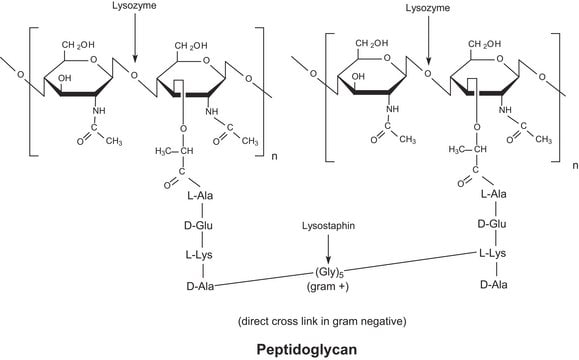A1075
Amyloid β Protein Fragment 1-40
≥90% (HPLC), powder
Synonyme(s) :
Aβ40
Se connecterpour consulter vos tarifs contractuels et ceux de votre entreprise/organisme
About This Item
Formule empirique (notation de Hill) :
C194H295N53O58S
Numéro CAS:
Poids moléculaire :
4329.80
Numéro MDL:
Code UNSPSC :
12352202
Nomenclature NACRES :
NA.32
Produits recommandés
Niveau de qualité
Essai
≥90% (HPLC)
Forme
powder
Couleur
white
Solubilité
1% acetic acid: 1 mg/mL
saline: insoluble
Numéro d'accès UniProt
Température de stockage
−20°C
Informations sur le gène
human ... APP(351)
Vous recherchez des produits similaires ? Visite Guide de comparaison des produits
Amino Acid Sequence
Asp-Ala-Glu-Phe-Arg-His-Asp-Ser-Gly-Tyr-Glu-Val-His-His-Gln-Lys-Leu-Val-Phe-Phe-Ala-Glu-Asp-Val-Gly-Ser-Asn-Lys-Gly-Ala-Ile-Ile-Gly-Leu-Met-Val-Gly-Gly-Val-Val
Description générale
Amyloid β Protein Fragment 1-40 (Aβ40) is derived from the amyloid-β protein (Aβ), which is mapped to human chromosome 21q21.3. Aβ40 is predominantly present in the vascular amyloid deposits. Aβ40 comprises of C-terminal membrane insertion domain. It shows structural transition from random coil to a α-helical structure in a water-micelle medium.
Application
Amyloid β Protein Fragment 1-40 has been used:
- in the temperature based conformational studies using Fourier transform infrared/differential scanning calorimetry (FT-IR/DSC) studies
- as a reference standard in sandwich-type enzyme immunoassay for quantifying amyloid A4 protein in cerebrospinal fluid of patients with head trauma
- as a component of embryonic stem cell medium to inhibit amyloid deposition in fibroblasts
Actions biochimiques/physiologiques
Amyloid β Protein Fragment 1-40 (Aβ40) forms cation based ion channels.
Amyloid β-protein is neurotrophic and neurotoxic in vivo and in vitro in human and rat neuronal cell cultures. β-Amyloid peptides (amino acids 1-42 and 1-43) are the major constituents of senile plaques and neurofibrillary tangles that occur in the hippocampus, neocortex, and amygdala of patients with Alzheimer′s disease.
Reconstitution
For maximal biological activity, dilute the stock in calcium-free PBS to 1 mg/ml and incubate at 37 °C for 4 days.
Autres remarques
Lyophilized from 0.1% TFA in H2O
Code de la classe de stockage
11 - Combustible Solids
Classe de danger pour l'eau (WGK)
WGK 3
Point d'éclair (°F)
Not applicable
Point d'éclair (°C)
Not applicable
Équipement de protection individuelle
Eyeshields, Gloves, type N95 (US)
Faites votre choix parmi les versions les plus récentes :
Déjà en possession de ce produit ?
Retrouvez la documentation relative aux produits que vous avez récemment achetés dans la Bibliothèque de documents.
Les clients ont également consulté
Solution Structure of Amyloid beta-Peptide (1- 40) in a Water- Micelle Environment. Is the Membrane-Spanning Domain Where We Think It Is?
Coles M, et al.
Biochemistry, 37(31), 11064-11077 (1998)
D R Howlett et al.
Neurodegeneration : a journal for neurodegenerative disorders, neuroprotection, and neuroregeneration, 4(1), 23-32 (1995-03-01)
The behaviour of synthetic batches of beta-amyloid (beta A) 1-40 peptide in solution has been studied. The effects of beta A1-40 on a PC12 cell toxicity assay was dependent upon the time of preincubation of an aqueous solution of the
H Funato et al.
The American journal of pathology, 152(4), 983-992 (1998-04-18)
Amyloid beta-protein (Abeta) is the major component of senile plaques that emerge in the cortex during aging and appear most abundantly in Alzheimer's disease. In the course of our immunocytochemical study on a large number of autopsy cases, we noticed
M Citron et al.
Proceedings of the National Academy of Sciences of the United States of America, 93(23), 13170-13175 (1996-11-12)
Cerebral deposition of the amyloid beta protein (A beta) is an early and invariant feature of Alzheimer disease (AD). Whereas the 40-amino acid form of A beta (A beta 40) accounts for approximately 90% of all A beta normally released
Diversity of amyloid beta protein fragment [1-40]-formed channels
Kourie JI, et al.
Cellular and Molecular Neurobiology, 21(3), 255-284 (2001)
Articles
Alzheimer's Disease
Notre équipe de scientifiques dispose d'une expérience dans tous les secteurs de la recherche, notamment en sciences de la vie, science des matériaux, synthèse chimique, chromatographie, analyse et dans de nombreux autres domaines..
Contacter notre Service technique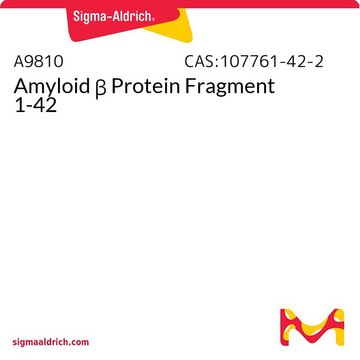
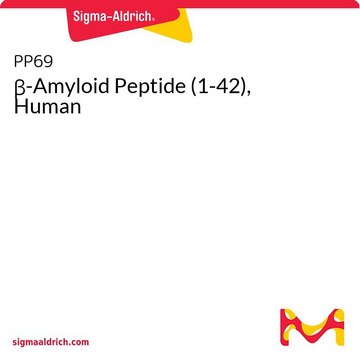

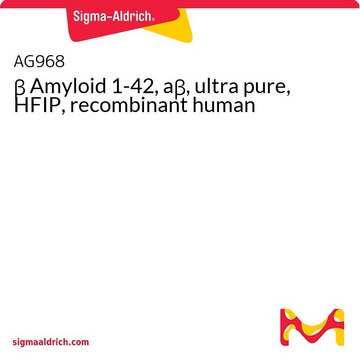

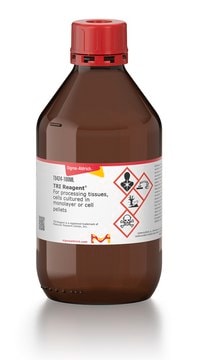
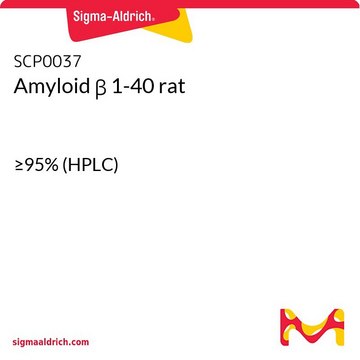
![[Gln22]-Amyloid β 1-40 human ≥95% (HPLC)](/deepweb/assets/sigmaaldrich/product/images/707/874/59f84b84-17c2-494f-b2ae-4ca860b83976/640/59f84b84-17c2-494f-b2ae-4ca860b83976.jpg)
